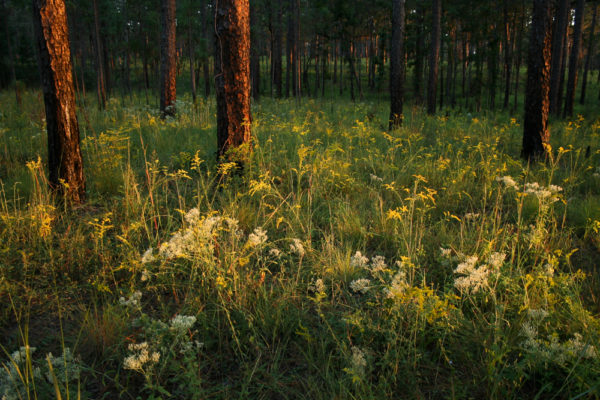The Maintenance of Species Diversity in Hyperdiverse Communities
What processes create, maintain, and modify biodiversity of species-rich communities?
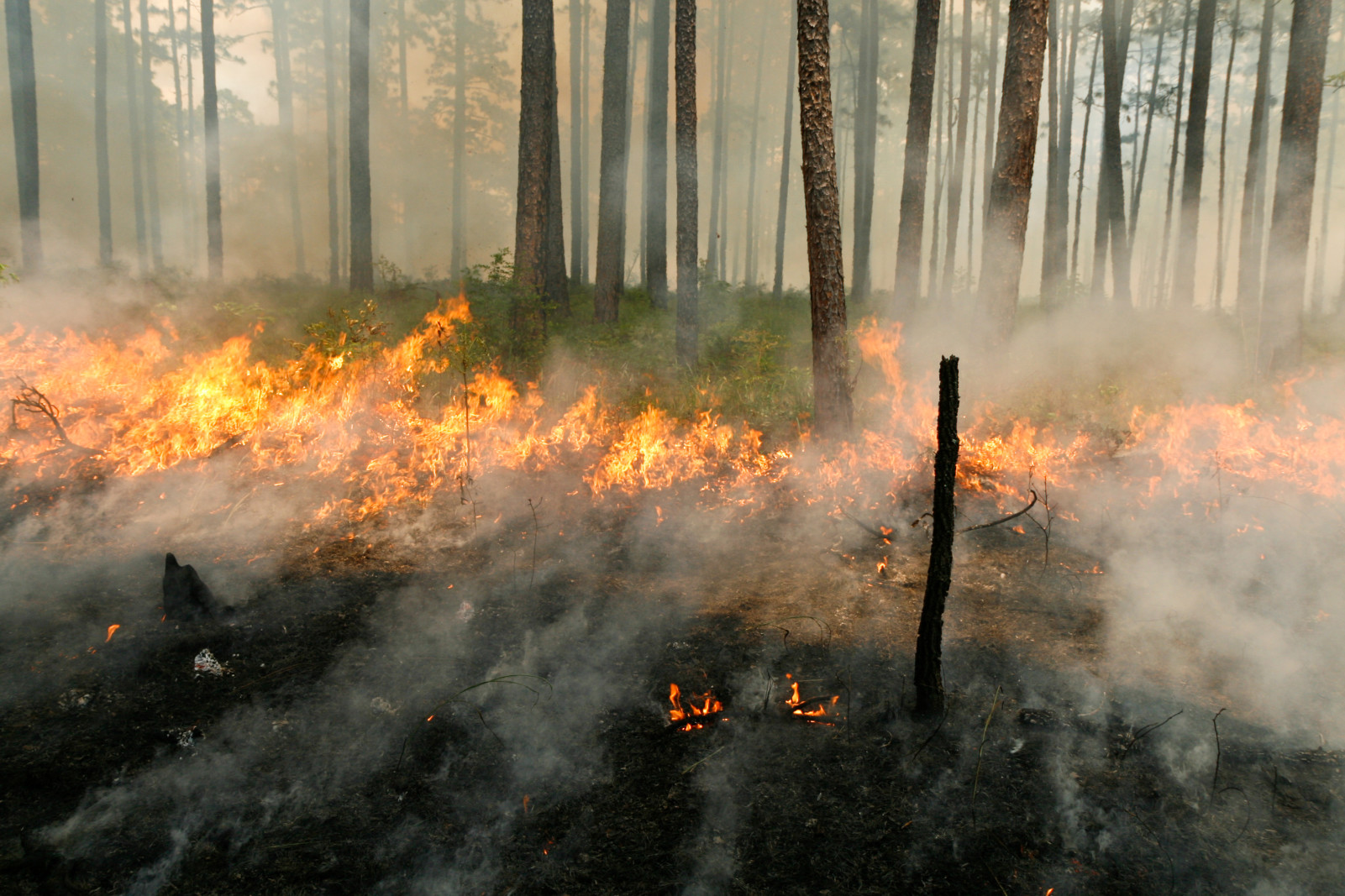
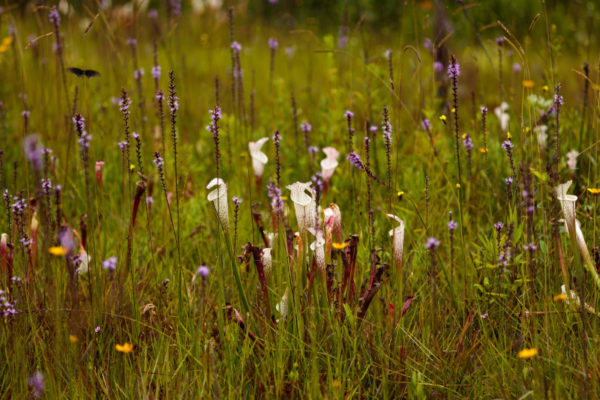
Prescribed Fire in Longleaf Pine Savanna – Louisiana (top) & Species-Rich Groundcover Plant Community – Alabama (bottom)
(Photos: J. Myers)
Species-rich communities have inspired a rich body of theory to explain community assembly and the maintenance of biodiversity. In these communities, extreme numbers of species often occur together at small scales. Classic explanations for high local biodiversity emphasize the importance of deterministic abiotic and biotic processes that promote stable coexistence of species via niche selection. Yet species composition and diversity often varies substantially among communities with similar abiotic and biotic conditions, suggesting important roles for dispersal limitation, neutral species interactions, and other stochastic processes that cause ecological drift. Moreover, processes at larger spatiotemporal scales such as speciation and the dynamics of regional species pools may also determine how species-rich communities assemble. Species-rich communities therefore provide an ideal setting for exploring the ways in which processes at different scales interface to determine community assembly, diversity, and dynamics.
We are experimentally testing the relative importance of dispersal limitation, ecological drift, and niche selection (e.g., environmental filtering from drought and fire; competition within and among dominant bunchgrass species and rare species; species sorting across soil-resource gradients) as drivers of biodiversity and community assembly in the hyperdiverse longleaf pine (Pinus palustris) ecosystem. Historically, this ecosystem spanned the North American Coastal Plain, a global biodiversity hotspot that supports >1,600 endemic plant species (Noss et al. 2015). At local scales, the longleaf pine ecosystem supports the highest plant species richness in North America (40-50+ species/m²) and is among the world’s most threatened ecosystems (>98% habitat loss), providing abundant opportunities to contribute towards biodiversity conservation, ecological restoration, and land management.
Related Publications
Current and former members of our research group in bold.
Myers, Jonathan A. & Kyle E. Harms. 2011. Seed arrival and ecological filters interact to assemble high-diversity plant communities. Ecology 92: 676-686. Abstract PDF Supporting Material
*Myers, Jonathan A. & Kyle E. Harms. 2009. Seed arrival, ecological filters, and plant species richness: A meta-analysis. Ecology Letters 12: 1250-1260. Abstract PDF Supporting Material *Review & Synthesis Paper
Myers, Jonathan A. & Kyle E. Harms. 2009. Local immigration, competition from dominant guilds, and the ecological assembly of high-diversity pine savannas. Ecology 90: 2745-2754. Abstract PDF Supporting Material
Catano, Christopher P., Timothy L. Dickson & Jonathan A. Myers. 2017. Dispersal and neutral sampling mediate contingent effects of disturbance on plant beta-diversity: A meta-analysis. Ecology Letters 20: 347-356. Abstract PDF Supporting Information Cover Article
Kirkman, L. Katherine & Jonathan A. Myers. 2017. Mechanistic controls of community assembly and biodiversity. Chapter 5 In: Kirkman, L. Katherine & Steven B. Jack (editors) Ecological Restoration and Management of Longleaf Pine Forests. CRC Press, Boca Raton, FL. PDF View Book
Harms, Kyle E., Paul R. Gagnon, Heather A. Passmore, Jonathan A. Myers & William J. Platt. 2017. Groundcover community assembly in high-diversity pine savannas: Seed arrival and environmental filtering through fire-generated pores. Ecosphere 8: e01716. Abstract PDF Supporting Information
Hovanes, Katherine, Kyle E. Harms, Paul R. Gagnon, Jonathan A. Myers & Bret D. Elderd. 2018. Overdispersed spatial patterning of dominant bunchgrasses in southeastern pine savannas. The American Naturalist 191: 658-667. Abstract PDF
Gagnon, Paul R., Kyle E. Harms, William J. Platt, Heather A. Passmore & Jonathan A. Myers. 2012. Small-scale variation in fuel loads differentially affects two co-dominant bunchgrasses in a species-rich pine savanna. PLoS ONE 7: e29674. Abstract PDF
Gagnon, Paul R., Heather A. Passmore, Matthew Slocum, Jonathan A. Myers, Kyle E. Harms, William J. Platt & C.E. Timothy Paine. 2015. Fuels and fires influence vegetation via above- and below-ground pathways in a high-diversity plant community. Journal of Ecology 103: 1009-1019. Abstract PDF Data
*Gagnon, Paul R., Heather A. Passmore, William J. Platt, Jonathan A. Myers, C.E. Timothy Paine & Kyle E. Harms. 2010. Does pyrogenicity protect burning plants? Ecology 91: 3481-3487. Abstract PDF Cover Article *Concepts & Synthesis Paper
Study Sites
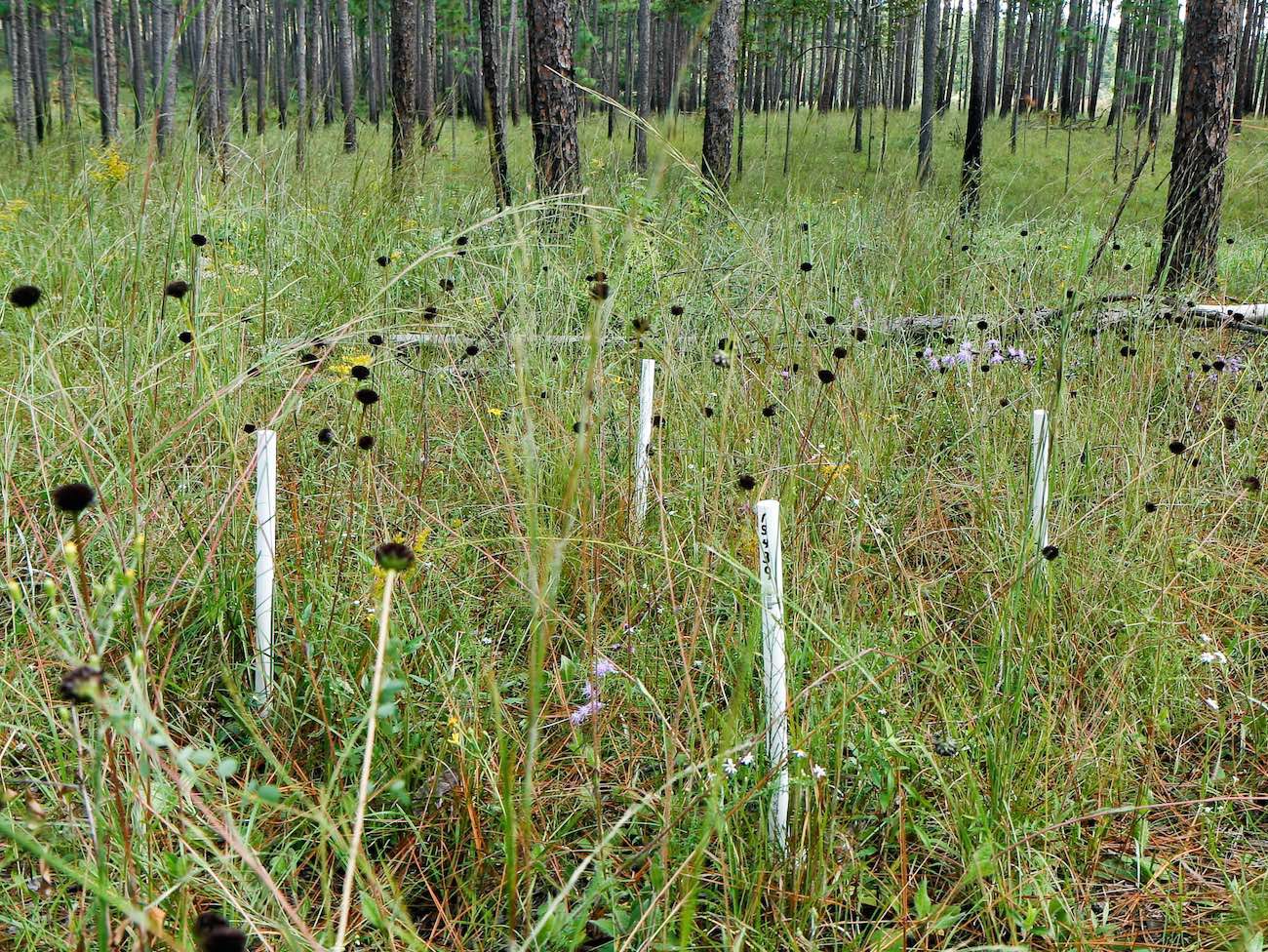
Quadrat (1 x 1 m) containing ~40 plant species in a longleaf pine savanna, Louisiana
(Photo: J. Myers)
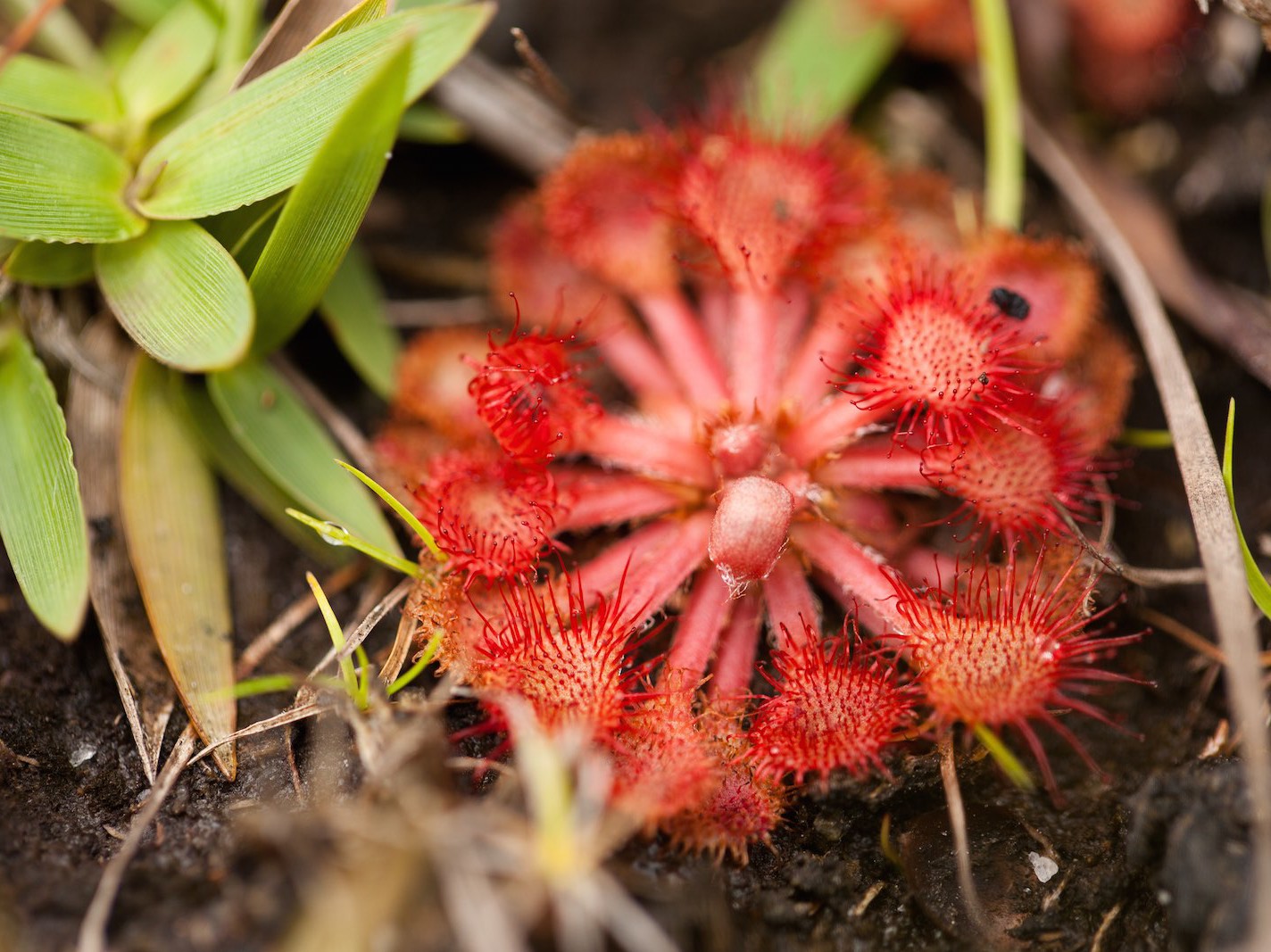
Sundew (Drosera sp. [Droseraceae])
in a longleaf pine savanna, Florida
(Photo: J. Myers)
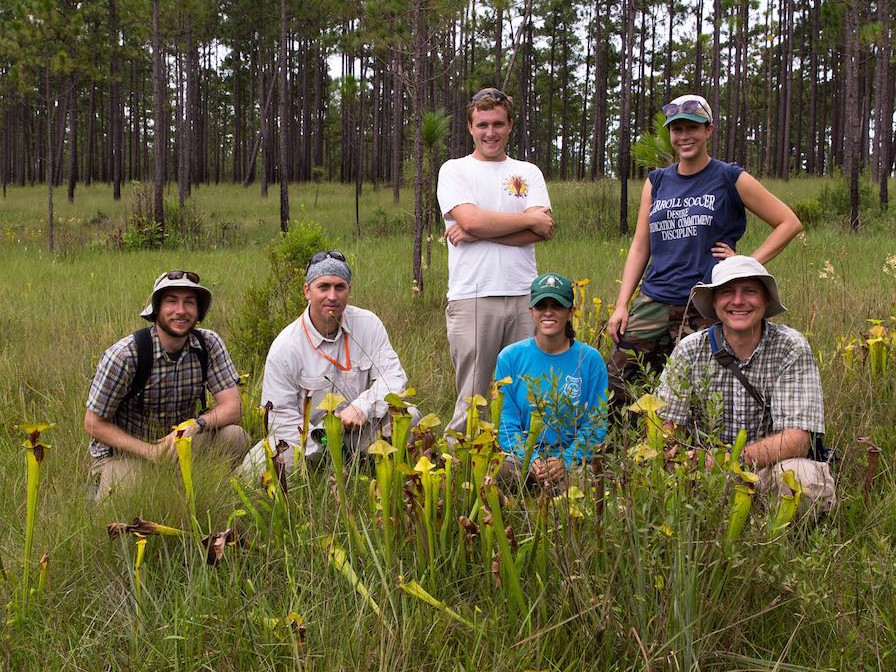
A photo gallery including images from longleaf pine ecosystems in Florida (Apalachicola National Forest; Blackwater River State Park; Eglin Air Force Base; Ocala National Forest; Ordway-Swisher Biological Station; St. Joseph Bay State Buffer Preserve), Louisiana (Camp Whispering Pines; Abita Creek Flatwoods Nature Conservancy Preserve), Alabama (Splinter Hill Bog Nature Conservancy Preserve), and Mississippi (DeSoto National Forest).
Education & Outreach
Acknowledgements


